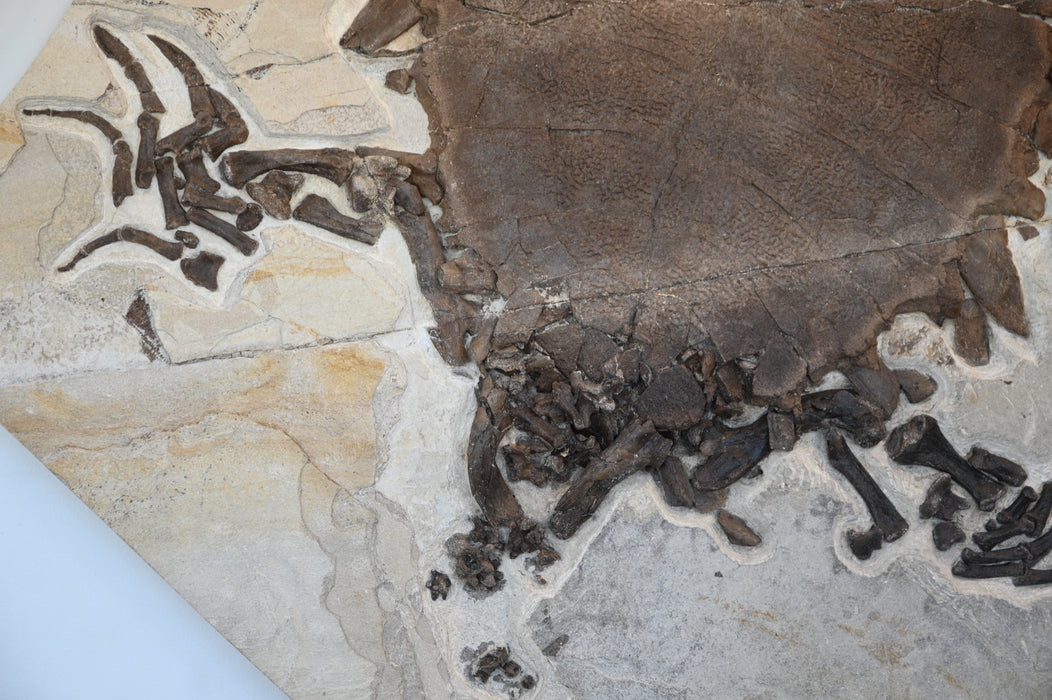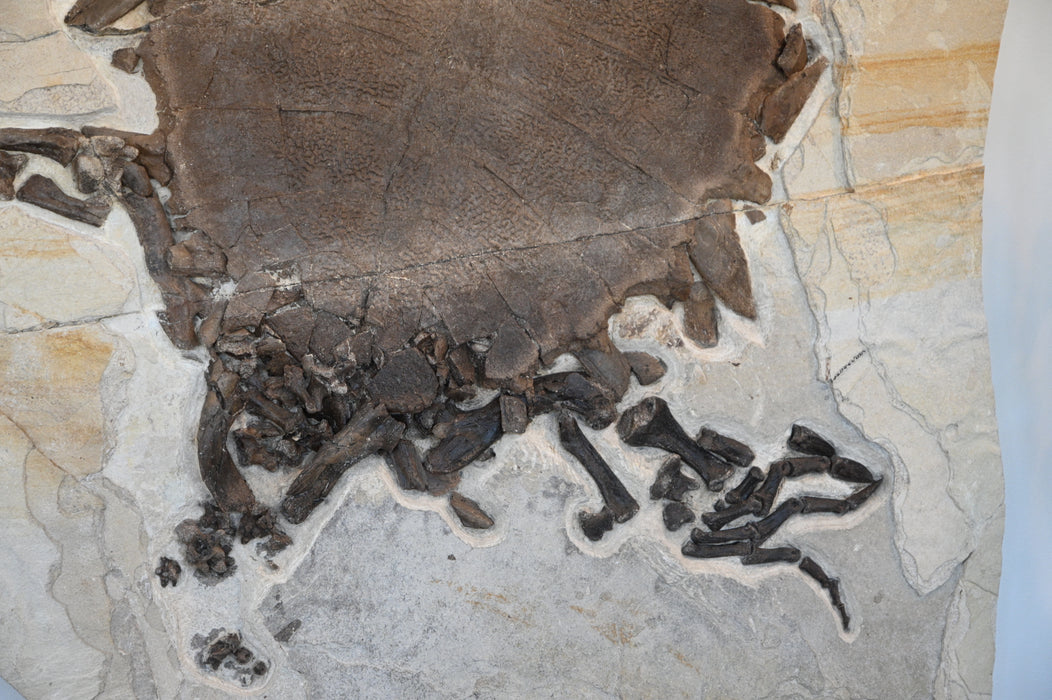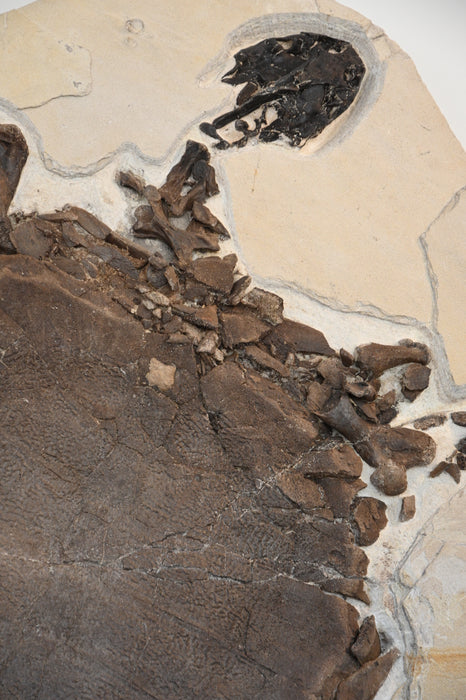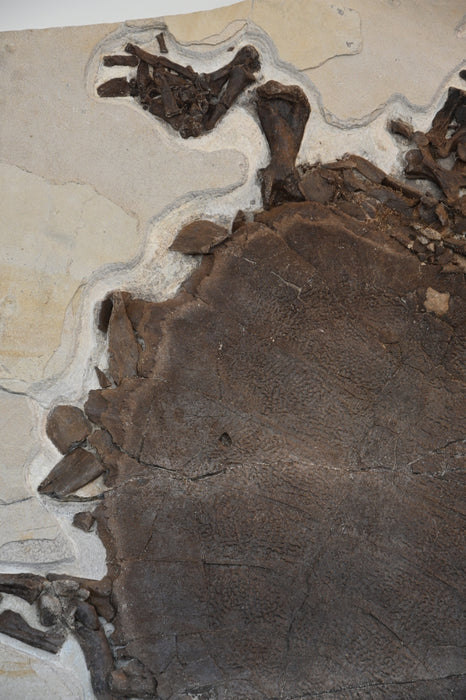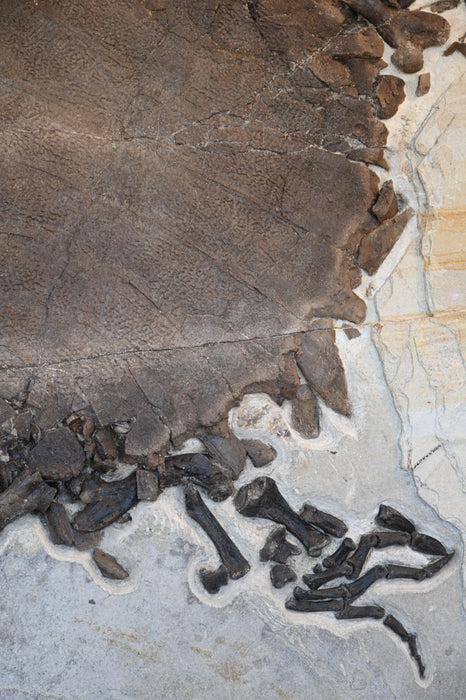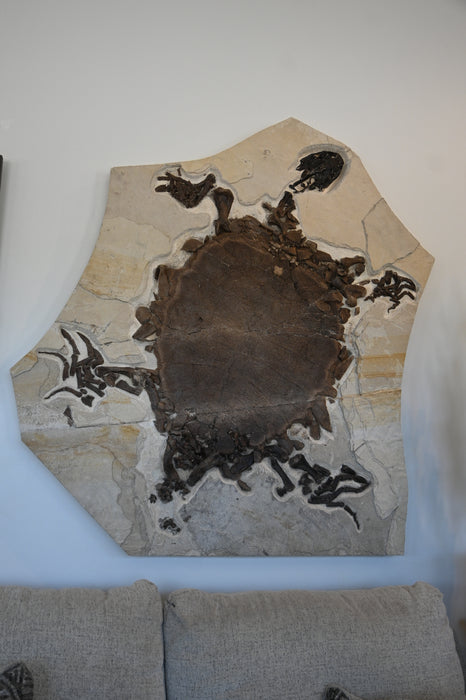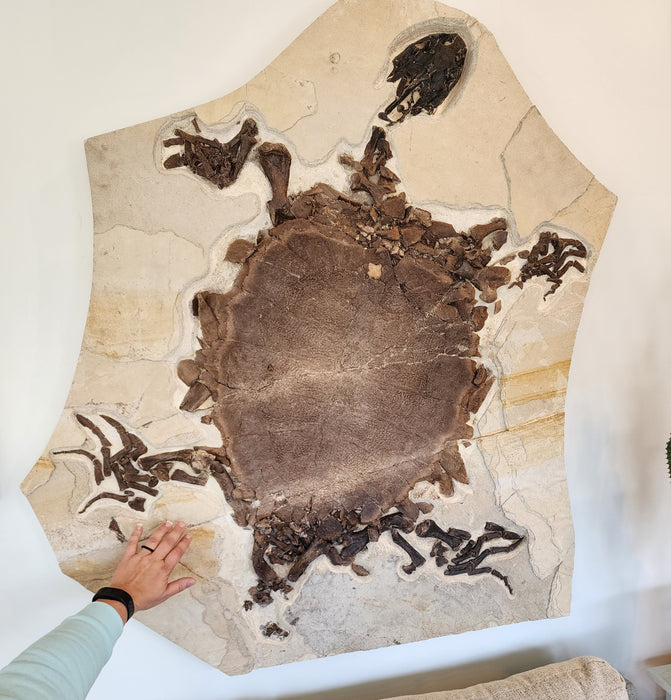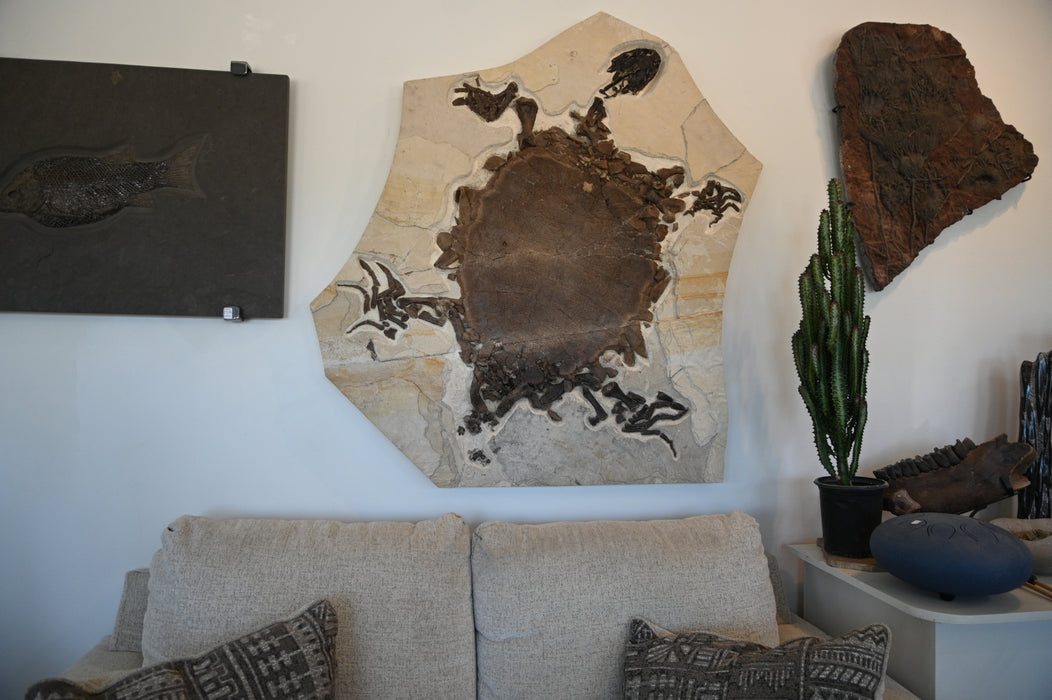
Rare Adult Axestemys byssinus Turtle | Green River Formation
Turtle is approx. 46" long
Matrix is approx. 49" x 42" x 2.5"
This specimen is an exceptionally rare and well preserved freshwater Turtle from the Green River Formation.
Although this beautiful specimen is in its natural matrix, some minor restoration has been done to preserve the integrity of the specimen. We have used the latest and newest restoration practices to bring this Axestemys byssinus Turtle fossil to life.
Order Testudines, Family Trionychidae
Members of the Trionychidae family:
- have webbed claws and feet
- only 3 claws on each hand
- have solid bone on the central part of their body, covered by thick skin
- lack hard bone on the outer edges of their shells
- can move quickly in open water and through muddy lake bottoms due to their light, flexible shells
Living members of the Trionychidae family:
- are strict carnivores
- known to feed on: fish, amphibians, invertebrates, birds, and mammals
- found in North America, Africa, and Asia
The 25 living species of the Trionychidae family are found exclusively in freshwater systems, suggesting that the upper portion of Fossil Lake was not salty.
Both A. heteroglypta and A. byssinus would have been apex (top of the food chain) or near-apex predators of Fossil Lake.

